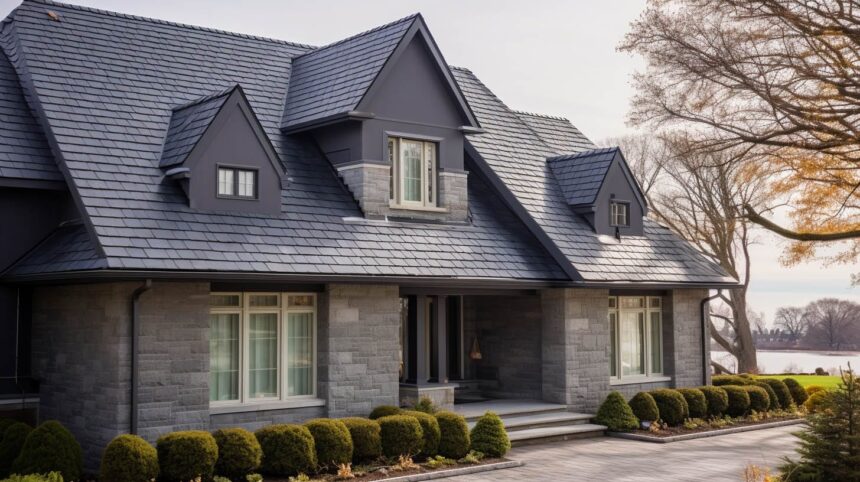When it comes to protecting your home, your roof stands as the first line of defense against the elements. While traditional materials like asphalt shingles and clay tiles have dominated the market for decades, composite roofing has emerged as a game-changing alternative that’s reshaping how homeowners think about roofing solutions.
Composite roofing combines multiple materials—typically recycled plastics, rubber, and wood fibers—to create a roofing product that delivers exceptional performance across multiple categories. This innovative approach addresses many of the shortcomings found in traditional roofing materials while offering unique benefits that make it an increasingly popular choice for residential applications.
Understanding composite roofing options can help you make an informed decision that balances aesthetics, durability, cost, and environmental impact. Whether you’re building a new home or replacing an aging roof, exploring what composite materials can offer might reveal the perfect solution for your specific needs.
What Makes Composite Roofing Different
Composite roofing materials are engineered products that blend various components to achieve specific performance characteristics. Unlike natural materials such as wood or slate, or simple manufactured products like basic asphalt shingles, composite roofing is designed from the ground up to optimize multiple properties simultaneously.
The manufacturing process typically involves combining recycled materials with binding agents and protective coatings. This allows manufacturers to control factors like weight, flexibility, color retention, and weather resistance in ways that aren’t possible with traditional materials. The result is a roofing product that can mimic the appearance of premium materials while delivering enhanced performance.
Most composite roofing products are designed to replicate the look of natural materials. You can find composite shingles that closely resemble cedar shakes, slate tiles, or even clay tiles, but with improved durability and reduced maintenance requirements. This aesthetic flexibility makes composite roofing attractive to homeowners who want a specific look without the drawbacks of natural materials.
Key Advantages of Composite Roofing
Superior Weather Resistance
Composite roofing materials excel in challenging weather conditions. The engineered nature of these products means they can be designed to withstand high winds, resist hail damage, and maintain their integrity through freeze-thaw cycles that can damage other materials. Many composite roofing products carry Class 4 impact ratings, the highest available for residential roofing materials.
The UV resistance built into composite materials helps prevent the fading and degradation that affects many traditional roofing options. While natural wood shakes can gray and split over time, and some asphalt shingles may lose granules and fade, quality composite roofing maintains its appearance and performance for decades.
Environmental Benefits
Sustainability is a major selling point for composite roofing. Most products incorporate significant amounts of recycled content, diverting materials like plastic bottles and rubber tires from landfills. At the end of their service life, many composite roofing materials can be recycled, creating a more circular approach to building materials.
The lighter weight of composite materials compared to alternatives like slate or clay tiles can also reduce the environmental impact of transportation and installation. Additionally, the longer lifespan of composite roofing means fewer replacements over time, reducing the overall environmental footprint of your roof.
Low Maintenance Requirements
One of the most compelling reasons homeowners choose composite roofing is the minimal maintenance it requires. Unlike wood shakes that need regular treatment to prevent rot and insect damage, or metal roofing that may require periodic painting, composite materials are designed to maintain their appearance and performance with minimal intervention.
Cleaning composite roofing typically involves nothing more than occasional washing with a garden hose or pressure washer. The materials resist moss and algae growth, and they won’t crack, split, or warp like natural materials might under changing weather conditions.
Types of Composite Roofing Materials
Synthetic Slate
Composite slate products offer the elegant appearance of natural slate without the extreme weight and fragility. These products typically weigh 80-90% less than natural slate while providing similar aesthetic appeal. The reduced weight means they can often be installed on homes that couldn’t support the load of genuine slate tiles.
Synthetic slate composite materials resist the splitting and breakage that can affect natural slate, especially in areas prone to freeze-thaw cycles. They’re also available in a wider range of colors than natural slate, giving homeowners more design flexibility.
Composite Wood Shakes
For homeowners who love the rustic charm of cedar shakes but want to avoid the maintenance challenges, composite wood shake products provide an ideal solution. These materials capture the natural grain patterns and color variations of wood while eliminating concerns about rot, insect damage, and fire susceptibility.
High-quality composite wood shakes are virtually indistinguishable from natural cedar at ground level, but they maintain their appearance much longer and don’t require the periodic staining or sealing that wood shakes need.
Rubber Composite Shingles
Made primarily from recycled rubber, often sourced from old tires, rubber composite shingles offer exceptional durability and weather resistance. These products excel in extreme weather conditions and can handle temperature fluctuations that might cause other materials to crack or become brittle.
Rubber composite materials are also excellent for noise reduction, making them a good choice for homes in areas with frequent rain or hailstorms.
Installation Considerations
Installing composite roofing requires specific techniques and considerations that differ from traditional materials. While many composite products are designed to be homeowner-friendly, professional installation typically ensures optimal performance and maintains warranty coverage.
The lighter weight of most composite materials can simplify installation and reduce structural requirements. However, proper fastening techniques are crucial for achieving the wind resistance ratings that make composite roofing attractive in the first place.
Ventilation requirements may also differ with composite roofing systems. Proper attic ventilation helps any roofing material perform better and last longer, but some composite products have specific ventilation recommendations to optimize their performance characteristics.
Cost Analysis and Long-Term Value
Composite roofing typically carries a higher upfront cost than basic asphalt shingles but often costs less than premium natural materials like slate or cedar shakes. The long-term value proposition becomes compelling when you factor in the extended lifespan and reduced maintenance requirements.
Most composite roofing products come with warranties ranging from 30 to 50 years, with some manufacturers offering lifetime warranties. This extended coverage reflects the confidence manufacturers have in their products and provides homeowners with peace of mind about their investment.
Energy efficiency can also contribute to long-term savings. Many composite roofing materials offer better insulation properties than traditional options, potentially reducing heating and cooling costs over the life of the roof.
Making the Right Choice for Your Home
Selecting the best composite roofing option requires considering your local climate, architectural style, budget, and personal preferences. Homes in areas prone to severe weather may benefit most from the impact resistance of rubber composite materials, while homes in fire-prone regions might prioritize the fire resistance offered by most composite products.
The aesthetic considerations are equally important. Take time to view actual installations of the products you’re considering, as photographs don’t always capture how materials look in different lighting conditions or from various angles.
Working with experienced roofing contractors who have installed the specific composite products you’re considering can provide valuable insights into performance expectations and installation requirements for your particular situation.
Your Next Steps Toward Better Roofing
Composite Roofing represents a significant advancement in residential roofing technology, offering homeowners the opportunity to enjoy premium aesthetics with enhanced performance and reduced maintenance. As manufacturing techniques continue to improve and more recycled materials become available, composite options are likely to become even more attractive.
If you’re considering composite roofing for your home, start by researching manufacturers and products that specifically address your priorities, whether that’s maximum durability, environmental sustainability, or aesthetic appeal. Request samples when possible, and don’t hesitate to ask for references from contractors who have experience with the products you’re considering.
The investment in quality composite roofing can pay dividends for decades through reduced maintenance, enhanced curb appeal, and improved weather protection. Take the time to explore your options thoroughly—your home deserves a roof that performs as well as it looks.


